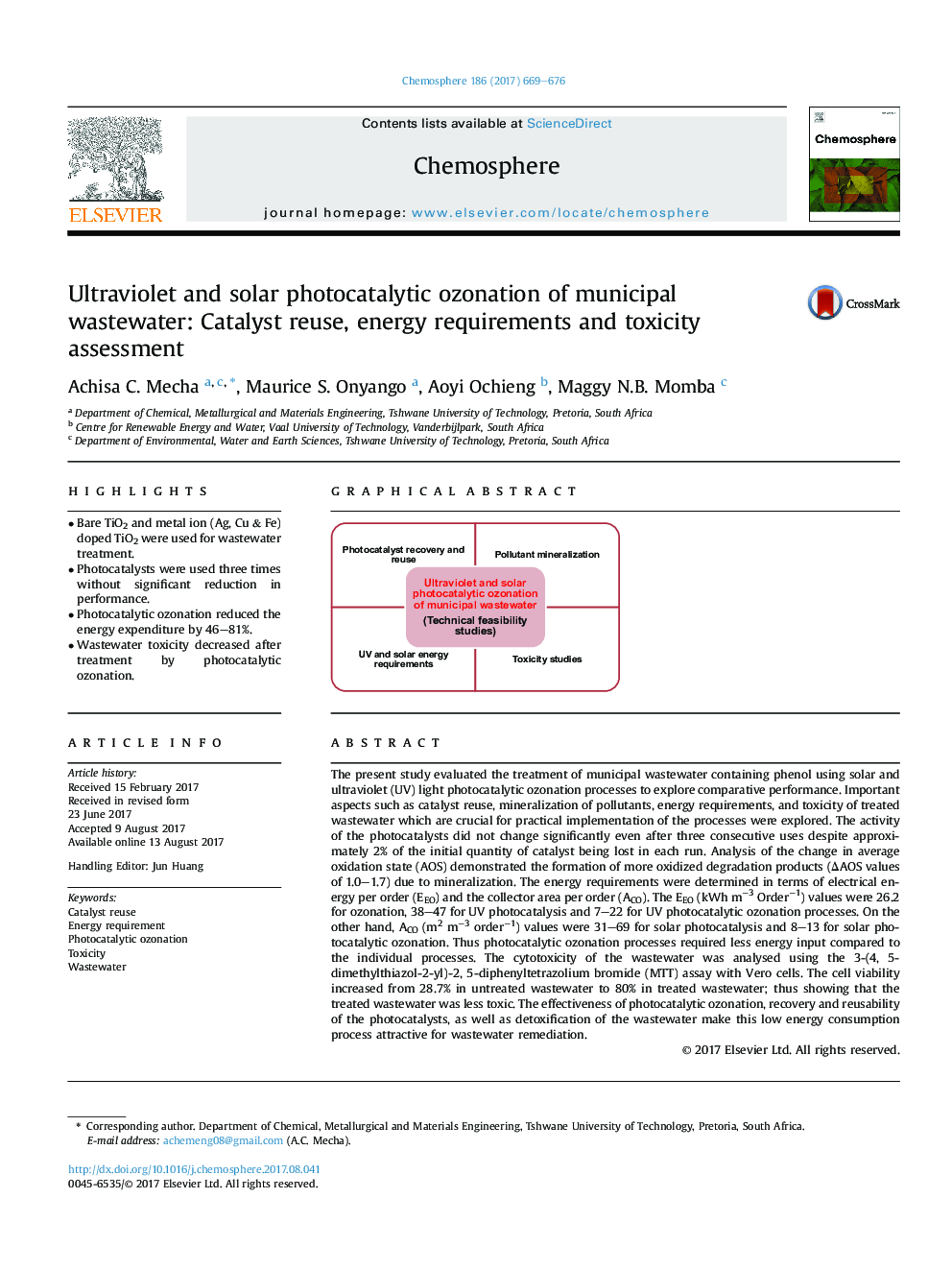| کد مقاله | کد نشریه | سال انتشار | مقاله انگلیسی | نسخه تمام متن |
|---|---|---|---|---|
| 5746103 | 1618785 | 2017 | 8 صفحه PDF | دانلود رایگان |
- Bare TiO2 and metal ion (Ag, Cu & Fe) doped TiO2 were used for wastewater treatment.
- Photocatalysts were used three times without significant reduction in performance.
- Photocatalytic ozonation reduced the energy expenditure by 46-81%.
- Wastewater toxicity decreased after treatment by photocatalytic ozonation.
The present study evaluated the treatment of municipal wastewater containing phenol using solar and ultraviolet (UV) light photocatalytic ozonation processes to explore comparative performance. Important aspects such as catalyst reuse, mineralization of pollutants, energy requirements, and toxicity of treated wastewater which are crucial for practical implementation of the processes were explored. The activity of the photocatalysts did not change significantly even after three consecutive uses despite approximately 2% of the initial quantity of catalyst being lost in each run. Analysis of the change in average oxidation state (AOS) demonstrated the formation of more oxidized degradation products (ÎAOS values of 1.0-1.7) due to mineralization. The energy requirements were determined in terms of electrical energy per order (EEO) and the collector area per order (ACO). The EEO (kWh mâ3 Orderâ1) values were 26.2 for ozonation, 38-47 for UV photocatalysis and 7-22 for UV photocatalytic ozonation processes. On the other hand, ACO (m2 mâ3 orderâ1) values were 31-69 for solar photocatalysis and 8-13 for solar photocatalytic ozonation. Thus photocatalytic ozonation processes required less energy input compared to the individual processes. The cytotoxicity of the wastewater was analysed using the 3-(4, 5-dimethylthiazol-2-yl)-2, 5-diphenyltetrazolium bromide (MTT) assay with Vero cells. The cell viability increased from 28.7% in untreated wastewater to 80% in treated wastewater; thus showing that the treated wastewater was less toxic. The effectiveness of photocatalytic ozonation, recovery and reusability of the photocatalysts, as well as detoxification of the wastewater make this low energy consumption process attractive for wastewater remediation.
190
Journal: Chemosphere - Volume 186, November 2017, Pages 669-676
